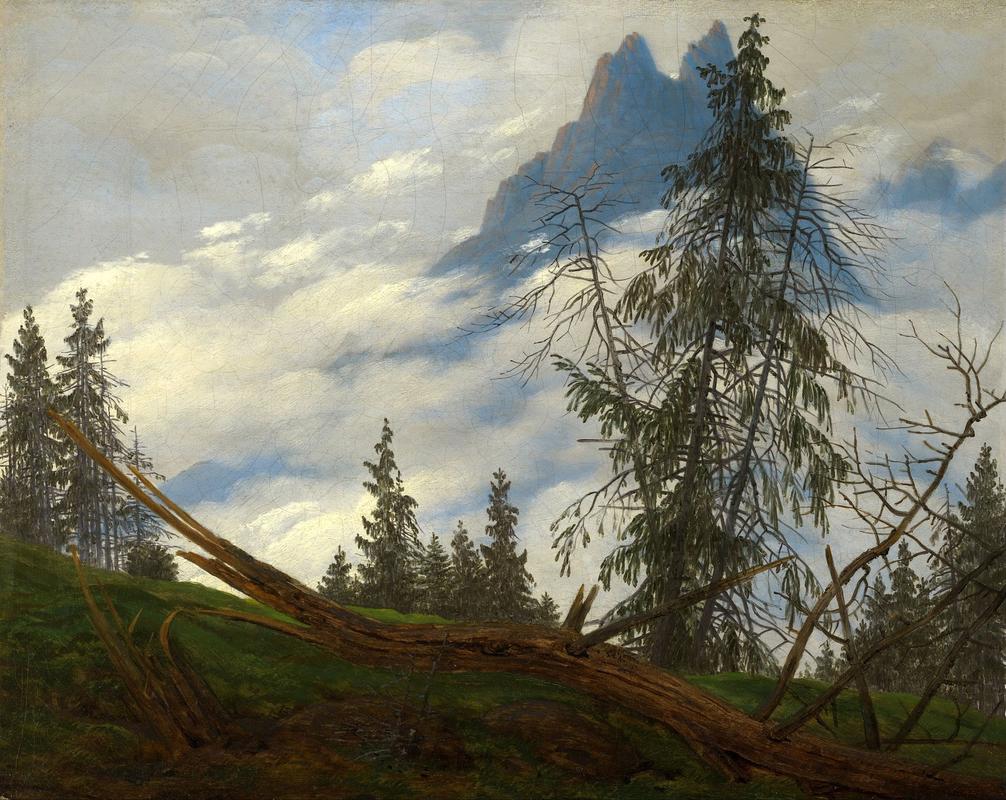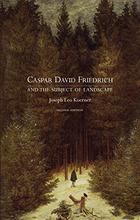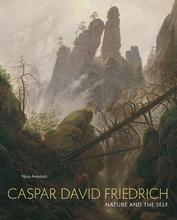More about Mountain Peak with Drifting Clouds
- All
- Info
- Shop

Contributor
You can almost feel the pain of the Austrian poet Franz André Heller as he tells off the dictator who ruined the honor and reputation of his nation in the 1930s with a psychotic and ruthless program of state violence:
"You took away our sunsets, sunsets by Caspar David Friedrich," one of the greatest painters of the Romantic movement, whose blend of spirituality and landscape is well-represented in his Mountain Peak with Drifting Clouds.
Aside from Riefenstahl, the dictator's favorite movie maker, most of the cultural figures promoted by the dictator were deceased: Richard Wagner was his musician, Nietzsche, who would have despised the role, was "his" philosopher, Friedrich, likewise, was "his" painter, in the government's propaganda campaign. Some of our own ancestors left a nation, which would become part of unified Germany, for the U.S. in the 1700s, not a moment too soon. You would think that Germany, with so many great musicians, artists, poets and thinkers, would be able to avoid the allure of the charismatic male dictator. But the dictator was not only an unethical monster and amphetamine addict: he was also a vegetarian, onetime artist, early self-help author, and art lover.
Friedrich painted the Mountain Peak with Drifting Clouds late in his career, when the unified German empire did not yet exist. Friedrich is most famous as the preeminent artist of the German Romantic movement, which emphasizes solitude and self-searching. Friedrich described his philosophy by declaring that "the artist's feeling is his law." This is why a therapist will tell you to "get in touch with your feelings," a very German notion. For the same reason, art therapy is just as effective as other, more conservative methods.
The word "Romantic" is an odd one, evoking the many centuries of Roman domination of politics, culture, and art, impressing upon the world their system of emperor-worship and, eventually, Christianity laced with paganism. Sometimes, when a young person has a bad drug experience, people shake their heads and say, "it must have been laced with something"—Christianity became laced with the ancient Roman greed for power, and the development of Romanticism was a way of escaping the endless use of rationalism. Friedrich uses feeling and intuition in Mountain Peak with Drifting Clouds to convey a reflection of his faith in the story of the exile of Adam and Eve from the garden of Eden, according to critics. You won't see an image of a naked couple or a snake in the painting, but they say the fallen tree in the foreground represents the "fall" of Adam and Eve, caused by their eating from the tree of knowledge of good and evil.
You can blame it on the woman, Chava, who the Romans renamed "Eve," but don't forget that, as our grandma taught us, she was originally joined, like "Siamese twins," with Adam, so he was responsible for it, too. She was never his "rib": that's a mistranslation of the Hebrew tzela, which appears in many other places in the Torah as the word "side," as in the sides of the Ark. I wouldn't be surprised if Medieval translators deliberately changed it to "rib" to justify policies which oppressed women. If you're nostalgic for a time when "men were men and women were women," you might want to skip the next sentence. Here's the original Hebrew story: Adam and Chava were two sides of a body which was able to reproduce with itself, belonging to both sexes.
Sources
- Baily, James Thomas Herbert. The Connoisseur, Volume 216, Issues 893-899. London: National Magazine Co., 1986.
- "Collection." Kimbell Art Museum, https://www.kimbellart.org/collection/ap-198408.
- Hodge, Susie. Painting Masterclass: Creative Techniques of 100 Great Artists. London: White Lion, 2019.
- Kaes, Anton. From Hitler to Heimat: The Return of History as Film. Cambridge: Harvard, 1989.
- "Mountain Peak with Drifting Clouds." Google Arts and Culture, https://artsandculture.google.com/asset/mountain-peak-with-drifting-clo….
- Potts, Malcolm, and Roger Short. Ever Since Adam and Eve: The Evolution of Human Sexuality. Cambridge: Cambridge University Press, 1999.
- Smith, Paul, and Carolyn Wylde. A Companion to Art Theory. Hoboken, NJ: Wiley, 2008.














I loved this picture so much. It brought back so many memories of being in the mountains with my family. I really like how simple the picture is yet there is a lot of different aspects to look at. My first sight was drawn to the wooden tree or limb that was collasped on the ground. This could have happened from a storm or an animal. I love how green the trees look in this too. My attention was drawn to the mountain peeking through the clouds in the top of the picture. This definitelt did not catch my eye when i first saw the photo, but looking for into depth i noticed it. I wonder if the artist did this for a reason. There also seems to be a texture on the art piece, almost looking like it is decaying or cracked.